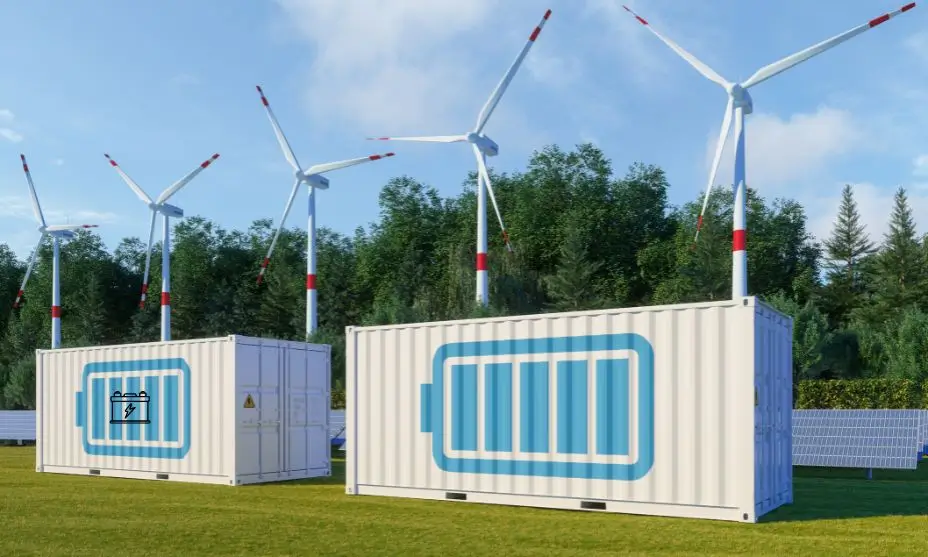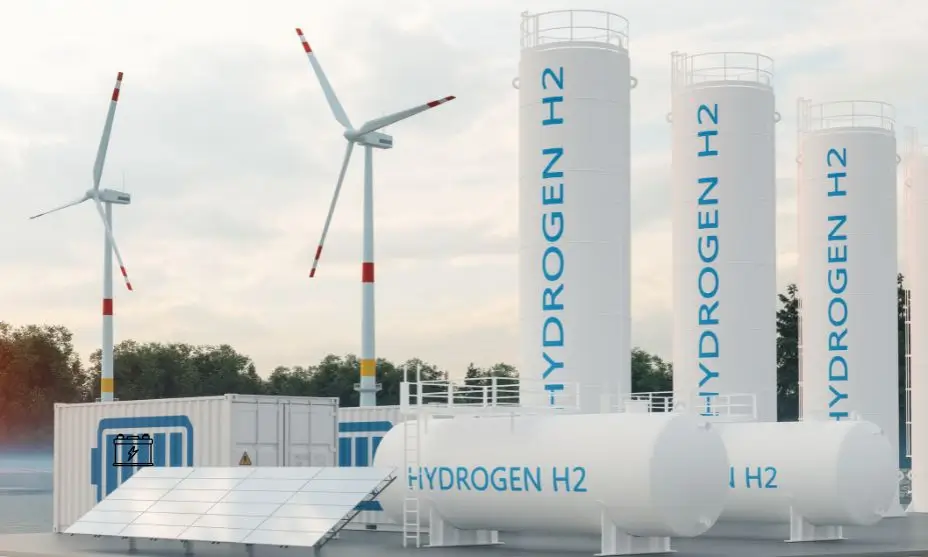Energy Storage – The Missing Link Between Ambition and Reality in Renewable Energy

What good is clean energy if it’s not available when we need it? As solar panels and wind turbines multiply across landscapes, one challenge remains unsolved: how to store that energy for later use.
Renewable sources are intermittent by nature and produce power on their own terms, not ours. However, without effective storage solutions, the mismatch between supply and demand continues to limit their reliability. Energy storage isn’t just a supporting technology. It’s the foundation for making renewable power truly practical, consistent, and scalable.
In this guide, we have elaborated on the missing link between ambition and reality in renewable energy.
The Renewable Energy Paradox
Renewable energy sources like solar and wind have seen rapid adoption worldwide, driven by climate goals and falling costs. But while they generate clean energy, they also introduce unpredictability into the grid.
Solar panels only produce during the day, and wind turbines depend on weather patterns. This variability creates moments when supply exceeds demand and others when it falls short, making the energy system less stable and harder to manage without some form of compensation.
Traditionally, fossil fuels have filled the gap, kicking in when renewables fall short. But relying on these backups undermines the environmental benefits of renewables. Worse, it creates inefficiencies. Too much energy at one moment, not enough the next.
Without a way to store excess power and deliver it when needed, clean energy can’t consistently support daily demand or emergencies. That’s the core paradox. We can generate renewable power, but we can’t always use it when we need it most.
What is Energy Storage and Why it Matters
Energy storage is a technology that holds energy for later use, acting as a buffer between production and consumption. For renewable systems, this means storing electricity when the sun is shining or wind is blowing, and releasing it during cloudy days or calm periods.
There are several types of energy storage, including:
- Batteries – like lithium-ion batteries used in phones and electric cars.
- Pumped hydro storage – water is pumped to a higher level and released to generate electricity when needed.
- Thermal storage – heat is stored and used to generate electricity later.
- Compressed air storage – air is compressed and stored in tanks, then released to turn turbines.
These systems help balance how and when energy is used.
Why Does Energy Storage Matter?
- Makes Renewable Energy Reliable: Solar panels and wind turbines only produce energy when the sun shines or the wind blows. Energy storage allows us to save that power and use it later even at night or on calm days.
- Keeps Electricity Flowing Smoothly: Sometimes, too much energy is produced at once. Other times, there’s a sudden increase in demand. Storage systems help keep supply and demand balanced, preventing power cuts or overloads.
- Reduces Waste and Saves Money: Without storage, extra electricity might go to waste. Storing energy allows it to be used efficiently, reducing the need for expensive backup generators or extra power plants.
- Protects Against Outages: Energy storage can provide backup electricity during emergencies like storms or grid failures. This is helpful for homes, hospitals, and businesses.
- Helps the Environment: Using energy storage with renewable sources means less reliance on coal or gas, which helps lower pollution and combat climate change.
Types of Energy Storage Solutions
1. Battery Energy Storage
Batteries are the most common form of energy storage. They store energy in a chemical form and release it as electricity when needed. You may already use small batteries in your phone or remote, but larger battery systems are used to power homes, buildings, and even entire neighborhoods.
Common battery types include:
- Lithium-ion batteries – Lightweight, efficient, and widely used.
- Lead-acid batteries – Cheaper but less efficient and have a shorter lifespan.
- Flow batteries – Long-lasting and better suited for large energy storage projects.
Why they matter:
- Easy to install in homes and businesses.
- Provide quick power when needed.
- Useful for storing solar or wind energy for night-time or cloudy days.

2. Pumped Hydro Storage
This is the oldest and most used form of energy storage in the world. It works by using electricity to pump water from a lower level to a higher reservoir. Later, when energy is needed, the water is released back down to spin turbines and create electricity.
Key benefits:
- Stores a lot of energy for long periods.
- Works well in areas with hills or mountains.
- Helps balance energy supply during peak hours.
3. Compressed Air Energy Storage (CAES)
In this method, electricity is used to compress air and store it in underground tanks or natural caves. Later, the air is released to drive a turbine and generate electricity.
Why it’s useful:
- Good for large-scale energy storage.
- Suitable in places with underground storage space.
- Can hold energy for longer than batteries.
4. Thermal Energy Storage
Thermal energy storage saves energy in the form of heat or cold. One example is storing heat using molten salt, which can be used later to produce electricity. Another example is storing ice at night to cool buildings during the day.
Main uses:
- Heating and cooling systems in buildings.
- Storing solar energy from thermal solar plants.
- Reducing energy costs by using stored energy during expensive peak hour
5. Flywheel Energy Storage
A flywheel stores energy in the form of motion. It spins at high speed, and when energy is needed, it slows down to release that energy as electricity.
Key features:
- Provides energy very quickly.
- Good for short-term power needs.
- Often used to stabilize electricity in power grids.
6. Hydrogen Energy Storage
This method uses electricity to split water into hydrogen and oxygen, a process called electrolysis. The hydrogen is stored and can later be turned back into electricity or used as a clean fuel.
Why it’s important:
- Great for long-term and large-scale storage.
- Hydrogen can power vehicles or entire buildings.
- Helps reduce carbon emissions.

Bridge Fuels and Transitional Technologies
As the world moves toward cleaner and more sustainable energy, we cannot instantly stop using fossil fuels. That’s where bridge fuels and transitional technologies come in. These are temporary solutions that help reduce emissions and support the shift from high-pollution energy sources to fully renewable options.
What Are Bridge Fuels?
Bridge fuels are energy sources that are cleaner than coal or oil but not completely renewable. They are used to “bridge the gap” between traditional fossil fuels and green energy. The most common bridge fuel is natural gas.
Key features of bridge fuels:
- Produce fewer carbon emissions than coal or oil.
- Can work with existing power plants and infrastructure.
- Easier to manage compared to solar and wind (which depend on weather).
However, while cleaner than coal, natural gas still contributes to climate change. That’s why it’s a temporary step not the final solution.
What Are Transitional Technologies?
Transitional technologies are tools and systems that help make the switch to renewable energy smoother. They don’t eliminate fossil fuels completely but reduce how much we depend on them. These technologies are flexible and can work with both old and new energy systems.
Examples include:
- Hybrid vehicles – Use both fuel and electricity to reduce fuel usage.
- Carbon capture and storage (CCS) – Traps carbon emissions from power plants and stores them underground.
- Flexible gas turbines – Can run on both natural gas and hydrogen, preparing for future clean fuels.
- Smart grids – Help manage electricity use more efficiently, especially with variable solar and wind energy.
Why They Matter
If they improve energy efficiency in gas compression and reduce unnecessary fuel burn, modern compressor control systems play a quiet but important role in cutting emissions from transitional power sources. They help extend the usefulness of existing infrastructure while aligning it more closely with low-carbon goals.
Bridge fuels and transitional technologies are important because:
- They reduce pollution now, even if they’re not perfect.
- They buy us time to scale up renewable energy like solar, wind, and battery storage.
- They keep energy affordable and reliable while we upgrade systems and build new infrastructure.
- They support economic growth by allowing industries to adapt slowly without disruption.
Where We Are Now
Globally, energy storage capacity is growing, but it still lags behind the rapid deployment of solar and wind. Most existing storage is pumped hydro, while newer battery projects are expanding in urban and industrial areas.
Despite progress, storage remains a small fraction of overall capacity, and in many regions, it’s not yet integrated into national energy strategies at scale. The result is that clean energy often gets curtailed or wasted when it could be saved for later use.
One major hurdle is the cost. Not just of the storage technology itself, but of the infrastructure upgrades needed to support it.
Supply chains for materials like lithium or rare earth elements can also create bottlenecks. And many electrical grids were built for one-way power flow, not the dynamic, two-way movement that storage requires. Until these issues are addressed, the gap between clean energy potential and real-world impact will remain wide.
The Future of Energy Storage and Innovation
Innovation in energy storage is moving fast, with researchers exploring new battery chemistries that are safer, longer-lasting, and less reliant on rare materials. Gravity-based storage, liquid air, and advanced thermal solutions are showing promise, especially for grid-scale applications.
Meanwhile, software is playing a growing role. Machine learning and predictive analytics help optimize when and how to charge or discharge stored energy to maximize value.
Another major opportunity lies in integrating storage with electric vehicles. With bi-directional charging, EVs could one day act as mobile storage units that support the grid during peak demand.
And as grids become smarter, distributed storage (spread across homes, businesses, and communities) could offer resilience in the face of disasters or demand spikes. These innovations are shifting storage from a niche technology to a mainstream necessity.
Conclusion
Until storage becomes widespread, the clean energy transition will remain incomplete. Advanced generation alone can’t deliver stability, reliability, or round-the-clock power.
Bridging the gap between ambition and reality means investing in storage technologies, updating regulations, and rethinking grid infrastructure to support a smarter, more flexible system. The path forward isn’t just about producing more renewable energy. It’s about making sure we can use it when and where it matters most.




